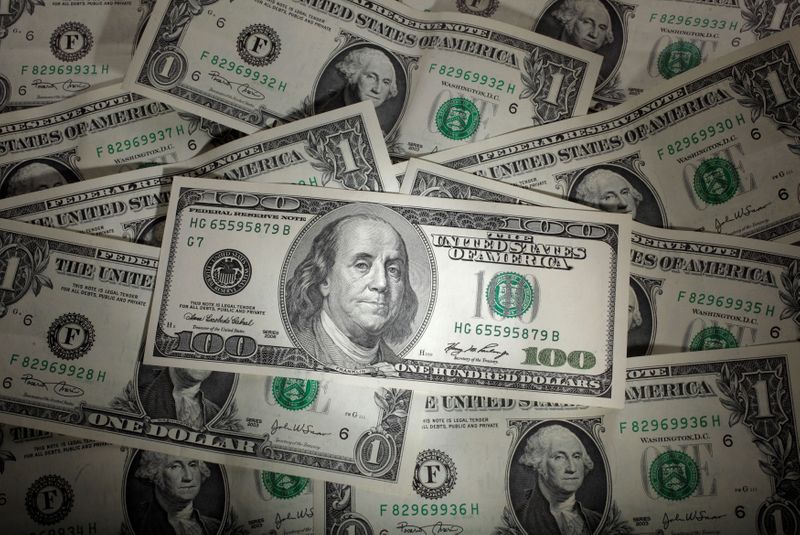By Saqib Iqbal Ahmed
NEW YORK (Reuters) - A resurgent coronavirus pandemic in the United States and the prospect of improving growth abroad are souring some investors on the dollar, threatening a years-long rally in the currency.
The dollar index is off 6% from its recent highs, while net bets against the currency in futures markets stand near their highest level since 2018.
A decline in the dollar earlier this week set off a technical formation known as a "Death Cross," which occurs when the 50-day moving average crosses below the 200-day moving average, according to analysts at BofA Global Research.
Past occurrences of the Death Cross have been followed by a period of dollar weakness eight out of nine times since 1980 when the 200-day moving average has been declining, as it is now, analysts at the bank said.
The U.S. currency's weakness comes amid criticism over the government's response to the coronavirus pandemic and protests over racial inequality that has eroded support for President Donald Trump months before the Nov. 3 presidential election. At the same time, investors increasingly expect growth to accelerate in Europe, threatening to narrow an economic performance gap that has boosted the dollar for years.
"If we look at the idea of American exceptionalism, that has dimmed dramatically during this crisis," said Karl Schamotta, chief market strategist at Cambridge Global Payments. "Growth differentials are tilting against the United States, putting the dollar on the defensive."
The dollar started off the year soft but reversed its losses in March, when a coronavirus-fueled selloff sent investors into the buck and other traditional haven assets.
Since then, the U.S. currency has slipped as improving risk appetite pushed investors to unwind some of those bets.
More recently, some investors have begun to factor in the U.S. coronavirus response in their dollar outlook amid signs that Europe appears to have had greater success in containing the pandemic.
While U.S. economic data has partially rebounded from a sharp decline earlier in the year, some investors worry those gains may evaporate if U.S. states roll back their reopenings due to a coronavirus resurgence.
"Clearly at this point, European Union countries have made more progress than ... the U.S. — where economic trends are lagging noticeably," said Shaun Osborne, chief FX strategist at Scotiabank, in a note.
The bank said its year-end forecast of $1.12 for the euro may change to the upside due to “improving Eurozone economic signals and the mishandling of the U.S.’ virus response.”
The euro recently traded at $1.1342 and is up 6% from its lows of the year.
Many investors have been wary of cutting their positions in the dollar and other haven assets, even as stocks have soared. Gold prices hit their highest level since 2011 on Wednesday, while cash levels remain historically high. A broad reversal of risk appetite could push investors to cut bets on stocks and return to the dollar.
For now, however, some are viewing the dollar in an increasingly negative light.
Analysts at TD Securities recently cut their outlook for the dollar’s performance against a broad range of major currencies. They forecast the euro will trade to $1.20 by late next year against a dollar they believe is overvalued by between 10% and 23% on a variety of metrics.
The dollar could also suffer if U.S. lawmakers fail to extend some of the government programs to support businesses and families that are set to expire soon, the bank's analysts said in a note.

The dollar's "worst-case this month is a surge in U.S. cases and drop over the fiscal cliff," the report said.